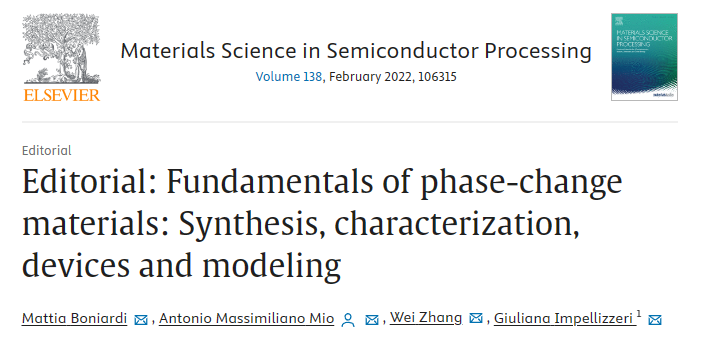
Density functional theory (DFT) calculations were carried out to assess the formation and effects of point defects and atomic vacancies in GeSb2Te4 and Ge2Sb2Te5 (V. Evang) and Sb2Te3 (K. Li) crystals. DFT-based ab initio molecular dynamics (AIMD) simulations were performed to gain further understanding of the crystallization process in Ge2Sb2Te5 (W.-X. Song) as well as the working principle and optical property of the TiTe2–Sb2Te3 phase-change heterostructure (X. Wang). A machine-learned interatomic potential with quasi-DFT accuracy was fitted in the scheme of deep neural network (DNN) for amorphous Sb (M. Shi). Using finite element method (FEM), a new PCM structure device structure was proposed, which aims at improving the trade-off between programming power and read time (I. Choi). Two dimensional six-contact phase change devices that can perform toggle logic operations were analyzed through 2D electrothermal simulations with dynamic materials modelling, integrated with CMOS access circuitry (R.S. Khan).
Link:https://www.sciencedirect.com/science/article/pii/S1369800121006491